The Gargoyle
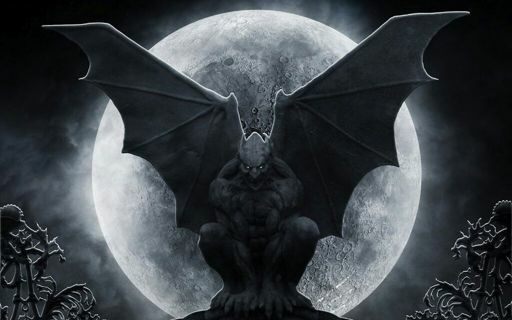
Gargoyles have a varied look and history. The creature is typically depicted as grotesque figures, faces, or creatures perching along buildings’ roofs or gutters. They are often shown as chimera creatures with features of bats, humans, and lions.
The Medieval superstition stated that these creatures would stand guard and ward off evil spirits. The winged gargoyles would fly around the entire village to scare off dark creatures. As the sun rose, the creatures would resume their place to frighten off those who looked upon their faces.
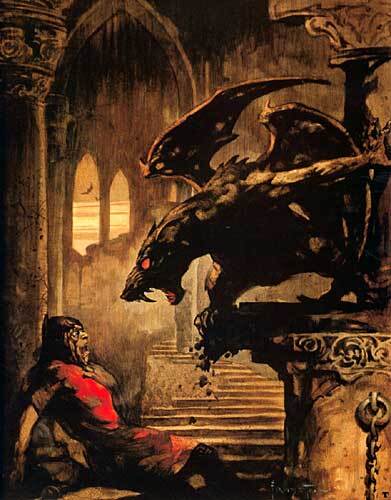
Gargoyles can be seen across ancient buildings and are thought to ward off evil spirits. “Gargoyle” is derived from the French word “gargouille” meaning throat. This references the fact water tends to spill from the mouth of the features. The carvings were added in the Middle Ages to filter rainwater away from the edge of the building and prevent eroding of the mortar on the stone.
While gargoyles are most commonly associated with medieval architecture, they have a much earlier origin. They have been on structures in ancient Egypt, Greece, Rome, and Etruscan buildings. The oldest known gargoyle is 13,000 years old in modern-day Turkey.
So what inspired these frightening creatures?
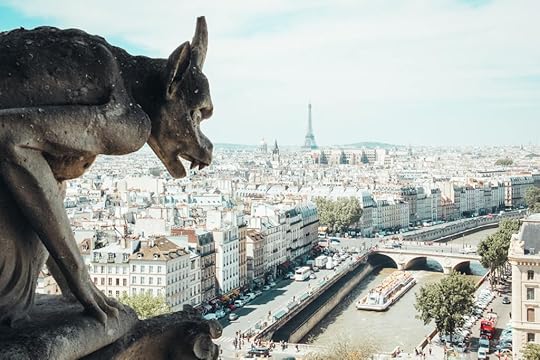
Some historians believe the reason gargoyles are carved across churches was to combine the “pagan” with Christianity. The creature may have been a creature brought to life by non-Christian beliefs. To make converts feel comfortable with the new religion, these beings were carved into the sides of the building as a way to “ward off demons and the workings of the devil.”
But where did this strange bat-like creature come from?
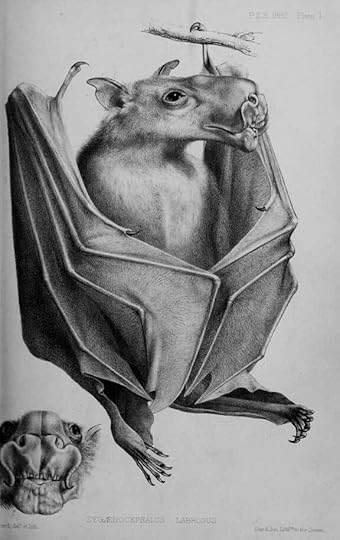
Hammer-headed bats are the largest megabat in continental Africa, with wingspans approaching 1 m. They can be found widely distributed in West and Central Africa. Males of this species have large vocal cords and resonating chambers on their faces, giving them an otherworldly appearance.
The hammer-headed bat is frugivorous, consuming a variety of fruits. It forages at night and sleeps during the day in roosts either alone or in small groups. The bat roosts in trees at least 20 m above the ground.
Today they are considered pests in places like Nigeria for their fruit diet and extremely loud “honking” noises at night. Some places are also studying the animal for its natural defense against the Ebola virus.
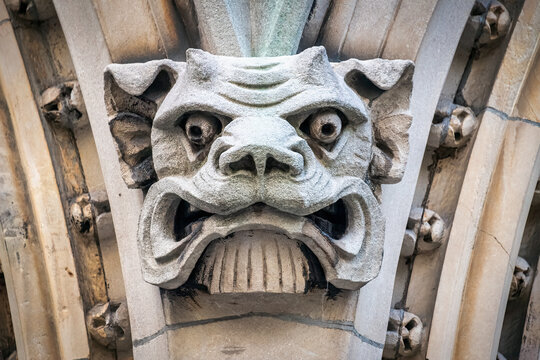
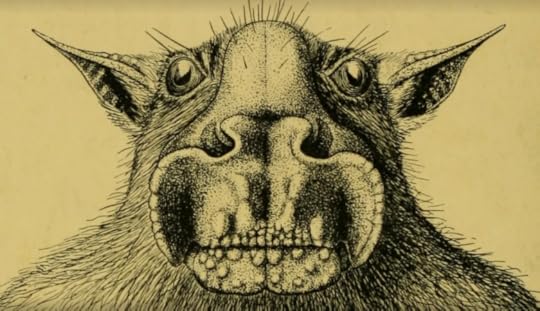
The hammer-headed bat was officially described and named in 1861 after French-American zoologist collected a specimen in Gabon. However, this creature has been around for much longer than that.
Gargoyles first appeared in Europe in the 13th century. When they first appeared, they were depictions of known creatures – most commonly lions. It was around the 15th century when the winged creature began appearing on buildings.
In the 15th century, Portugal became the first European country to officially begin direct trade with Africa. This opened the door for Europeans to travel into the unknown continent and come face to face with some of their more unusual creatures. These stories filtered back to the European citizens and they were forever immortalized as Gargoyles.
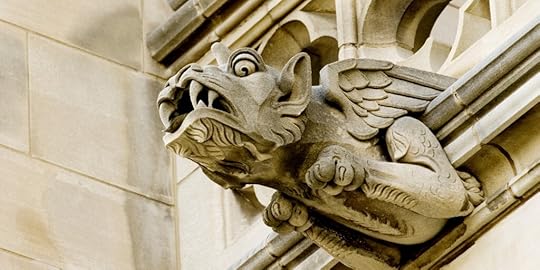
The gargoyle has become much more popular since the Victorian Era. In fact, many of the well-known gargoyles on the Cathedral of Notre Dame were not added until the 1800’s. New gargoyles have also been added to the National Cathedral in Washington, D.C. Children were asked to design the new face and the face of Darth Vader was added to the side of the building.
There have also been several depictions of gargoyles in pop culture. They famously were added to Victor Hugo’s “Hunchback of Notre Dame” and the Disney animated version. There was also the 1990’s Disney TV series called “Gargoyles.”
Sources:
Bubbl3z (n.d.). Gargoyle. Mythology and Folklore. Retrieved August 12, 2023, from https://aminoapps.com/c/mythfolklore/page/item/gargoyle/x8BM_X7uQI6g7Vn1ZgrrdlK0JD3jWMdq0z
(n.d.). Gargoyle. Mythical Creatures. Retrieved August 12, 2023, from https://about-mythical-creatures.weebly.com/gargoyle.html
(2021, August 6). Gargoyles. Designing Buildings. Retrieved August 12, 2023, from https://www.designingbuildings.co.uk/wiki/Gargoyle?fbclid=IwAR0HtDieJH1R-x3Yp5zIwvXE7ZtTeRyi4foJpOdbJylXjdCYEqsXEWLIkRY#:~:text=The%20earliest%20forms%20of%20gargoyle,architecture%20from%20the%20Middle%20Ages
Gill, M. (2019). Have You Ever Heard of the Hammerhead bat. Rare. Retrieved August 12, 2023, from https://rare.us/rare-media/entertainment-and-culture/rare-animals/have-you-ever-heard-of-the-hammerhead-bat/
Helmenstine, A. M. (2019, April 4). Hammer-Headed Bat Facts. Thought Co. Retrieved August 12, 2023, from https://www.thoughtco.com/hammer-headed-bat-facts-4177418
Langevin, P.; Barclay, R. (1990). “Hypsignathus monstrosus”. Mammalian Species (357): 1–4.
London, J. (2018, October 1). 21 Crazy Facts about Gargoyles. Thought Catalog. Retrieved August 12, 2023, from https://thoughtcatalog.com/jeremy-london/2018/09/gargoyles/
[PBS]. (1999, October 29). Gargoyles [Video]. Religion and Ethics Newsweekly. https://www.pbs.org/wnet/religionandethics/1999/10/29/october-29-1999-gargoyles/9368/#:~:text=Some%20historians%20believe%20gargoyles%20were,evil%20are%20never%20far%20away.
(n.d.). Trade with Africa. Discovering Bristol. Retrieved August 12, 2023, from http://www.discoveringbristol.org.uk/slavery/routes/bristol-to-africa/bristol-trading-port/africa-trade/#:~:text=European%20countries%20began%20trading%20directly,were%20used%20as%20domestic%20servants.
Young, S. P. (2020, December 31). The Grotesque World of Gargoyles. Ancient Origins. Retrieved August 12, 2023, from https://www.ancient-origins.net/artifacts-other-artifacts/gargoyles-0012253



